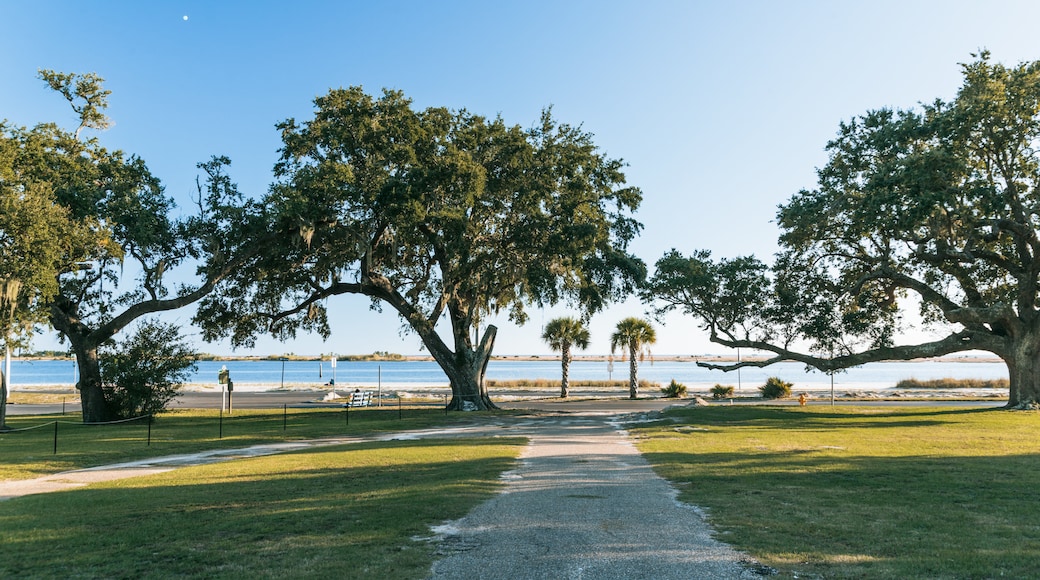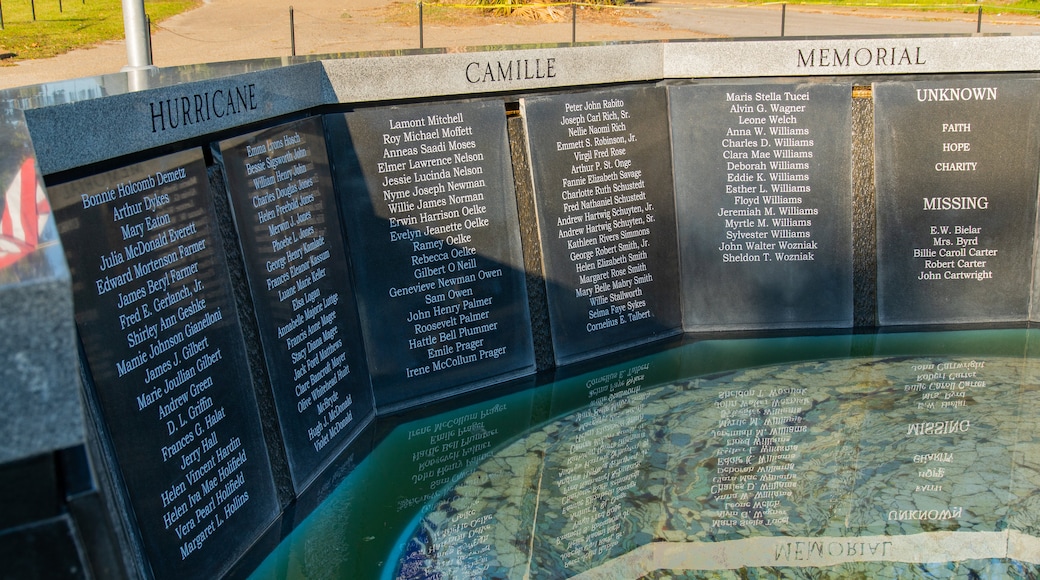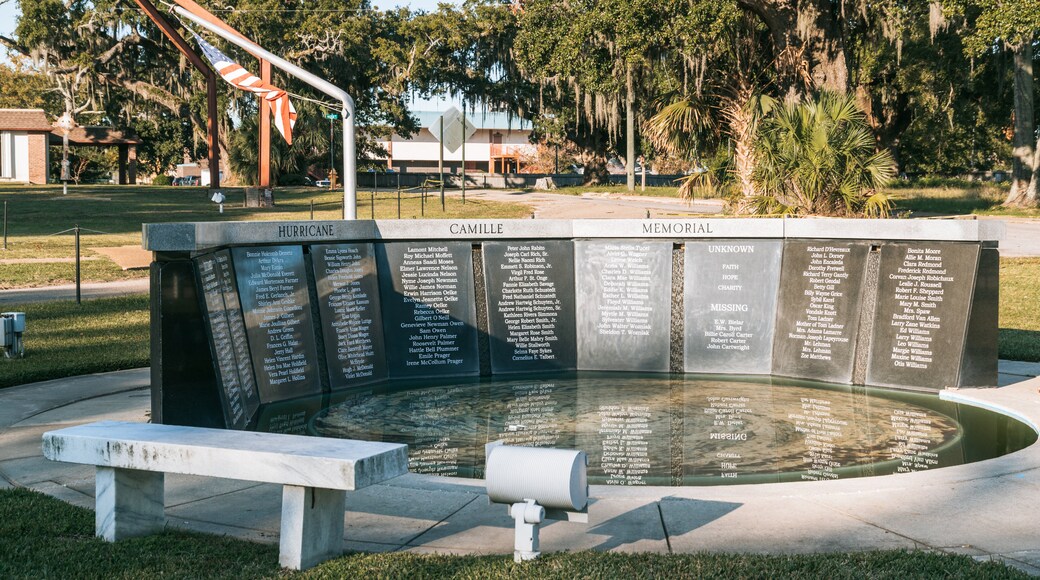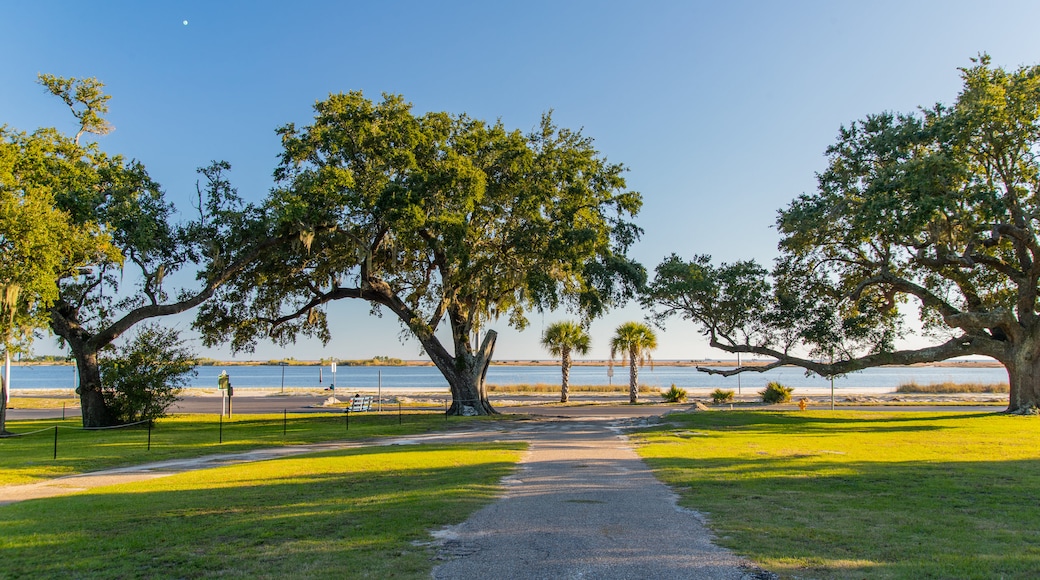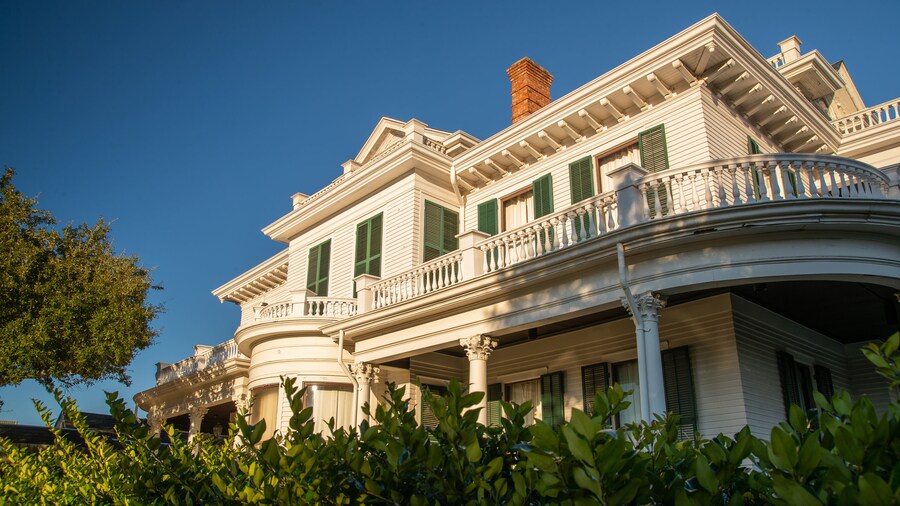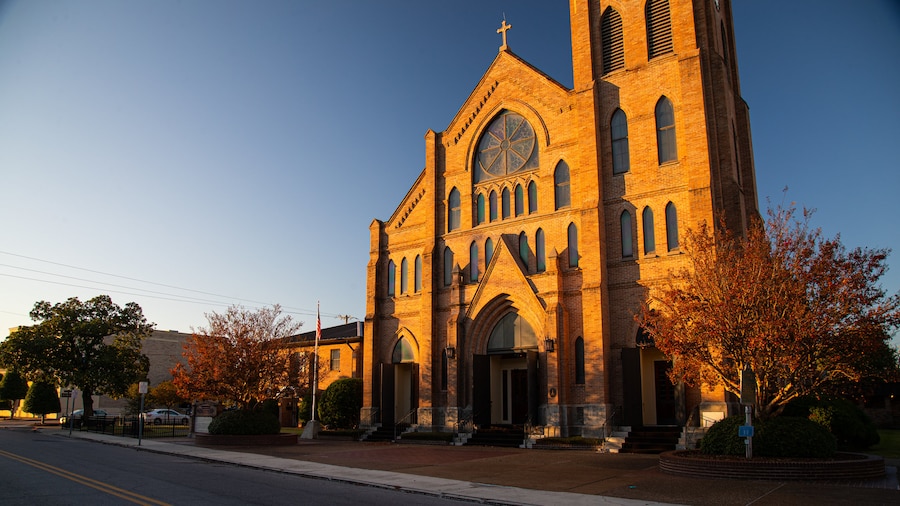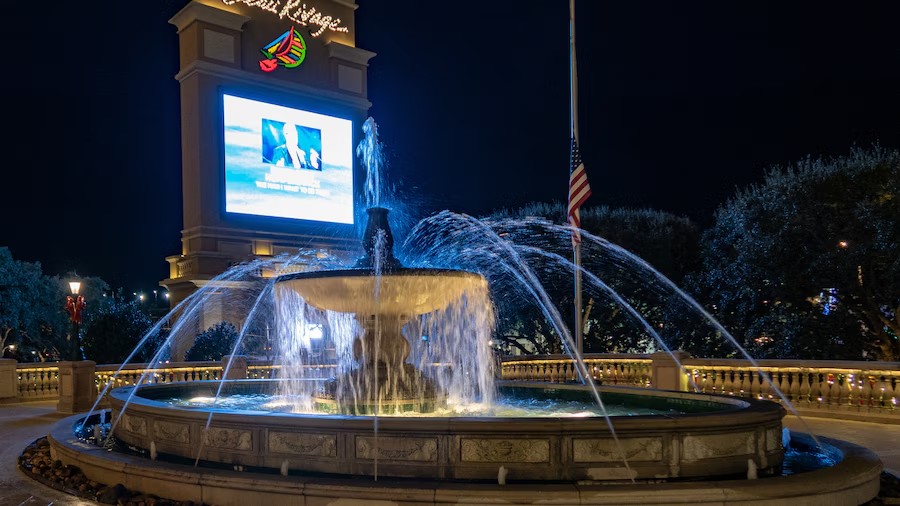When visiting the Hurricane Camille Memorial, reflect on the devastation and deaths resulting from this treacherous Category 5 storm that made landfall in Mississippi in 1969. The memorial is in a peaceful beachfront setting where the Episcopal Church of the Redeemer stood before it was destroyed in 2005 by another catastrophic event, Hurricane Katrina.
Learn some of the facts related to this deadly weather incident. Hurricane Camille had some of the strongest winds in recorded U.S. history, with gusts estimated at 175 miles per hour (280 kilometers per hour). Following the storm, 172 people along the Mississippi Coast were dead or missing. Read the inscriptions of their names on the inner wall of the memorial. Sadly, nine members of one family perished in the storm.
The design of the memorial holds symbolism. A black stone wall forms a semi-circle with the inscribed names. This faces out to the coast, as if the people enshrined could gaze at the sea. Note the blue, green and white tiles depicting a swirling hurricane under a small pool in front of the wall of names.
A few yards inland, four reddish-brown beams rise and bend to join at a point. This is the frame for the church destroyed in 2005. A flagpole holding the U.S. flag bends toward the beams, giving the appearance it was bent by strong hurricane winds. Hurricane Katrina also damaged the memorial, but it was restored several years later.
Find the Hurricane Camille Memorial a few blocks southeast of central Biloxi, across from the pretty sand beach east of the Biloxi Small Craft Harbor. The site is free to visit and open at all times, with lights shining on the names. A small parking area is available. Sit on one of the stone benches in front of the memorial.
While in the area, visit the Ohr-O’Keefe Museum of Art, St. Michael Catholic Church and the Maritime and Seafood Industry Museum.
